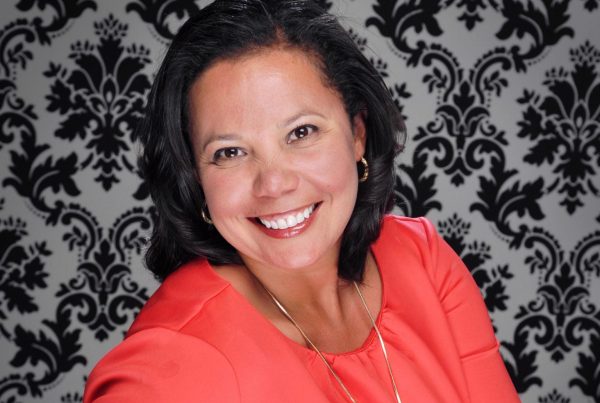
To better prepare students for clinical practice as you begin a new semester and school year, there are specific steps that need to be done, but must be implemented in an orderly sequence.
In last week’s blog, I discussed the importance of having a mission as an educator and a vision that better prepares students for practice. Be sure to check it out.
As an educator, you are on a journey whether you realize it or not.
This journey will likely include unexpected turns, barriers, and road blocks that will get in the way of your desire to implement needed change.
These barriers and road blocks can include resistance from students as well as faculty colleagues.
Academic Serenity Prayer
The barriers that you do not have control over can ultimately be overcome.
The secret?
Though you can’t directly control most of what takes place in the bigger picture of nursing education, there is one thing you have complete control over.
You.
How you decide to RESPOND to these challenges and struggles and your internal motivation as an educator will ultimately determine your success or failure to overcome the most common struggles in academia.
As a newer nurse educator I quickly realized that change does not come easy and attempts to implement change met resistance from not only students but the faculty I taught with.
As a result, I considered throwing in the towel and say it’s not worth it!
I also received negative feedback from students and lack of support for my new ideas from faculty in meetings.
I began to wonder is there something wrong with me? Maybe I should just try to fit in and go with the flow instead?
Can you relate?
Current Problem
Unfortunately the status quo is no longer an option.
According to an article published this year, A Crisis in Competence, only 23% of graduate nursing students, all who passed the NCLEX® were prepared for real-world clinical practice and able to think like a nurse.
That means that the vast majority or more than three quarters were not!
The authors of this study concluded that nursing education is losing ground in the quest for practice readiness (see prior blog for more).
In other words, things have gotten worse not better despite leaders such as Dr. Patricia Benner warning that it is time for radical transformation in how nursing is taught (Benner, Sutphen, Leonard, & Day, 2010).
Why Nothing Changes
WHY is nursing education losing ground despite all the information and tools that are available to implement needed change?
If information in nursing is doubling every seven years, why isn’t this information that educators have access to changing and improving practice readiness of nurse graduates?
There is no shortage of conferences and workshops for educators to attend and learn new tools and strategies to better teach, yet we continue to lose more ground in this battle over time.
There is a reason that students continue to be ill prepared for real-world practice.
It is not a lack of information, tools, or even strategies to flip your classroom.
The real problem is NOT the need to change the curriculum, or FLIP your classroom with active learning.
You are the Key!
Take a long look in the mirror, and what you see is the key to transformation that will improve practice readiness in nursing education.
YOU are the key and needed for such a time as this!
But more than a warm body to fill a position in your department is needed.
In order for lasting change to be realized in nursing education there are three things that need to be transformed within you.
You have something unique to offer your program that only you can do! Embrace this responsibility and spread your wings to see it realized.
First Steps to Practice Readiness
1. Change the way you THINK about nursing education
What is the ultimate objective of nursing education?
Based on my observations as a newer nurse educator and conference titles it is all about NCLEX® success!
Though this is an important benchmark, we must never lose sight that it is only a multiple-choice test and once it is passed, the real test begins.
Is this student well prepared for real-world clinical practice that will include not just one or two patients but several patients and all the demands that go with it?
This is why reality shock is a common lived experience of new graduate nurses.
The most important paradigm shift that nurse educators must embrace is to make preparation for practice and what that requires the MOST important priority in your program.
2. Change the way you THINK about yourself
I do not want to play Dr. Phil but I have observed that some nurses in practice have embraced the powerlessness that they often feel in the health care system.
This mindset can be transferred to academia and can lead to an acceptance of the status quo and why bother fighting for needed change when other faculty or even nurse leaders may not support you.
Incivility you may have experienced from the present or past colleagues is like a sticky slime that “sticks” to you and can cause you to check out, keep your head down, and go into survival mode.
But first, take care of your self, take time to be refreshed and restored, and then approach the new year fully present and engaged.
3. Change your motivation to teach
WHY do you do what you do as a nurse educator?
Is it because you have a passion and love of teaching and serving your students?
If so, you will be a needed transformer of nursing education.
I have observed that educators who have lost their passion have also lost the desire to be excellent and the best that they can be.
This is the poison pill of nursing education. It is openly acknowledged even in the nursing literature to be a joy-stealing environment.
Incivility and bullying in academia steals the joy and passion that is required to be excellent.
Based on my observations in nursing education, this is likely the biggest contributing factor to the lack of practice readiness.
Educators have lost their joy, are still looking for it and as a result have settled to just get through another school year.
Time to Reflect
I do not know your heart motivation to be an educator but you do.
I have come up with the following reflection questions that I want you to honestly answer.
Look under the hood and see how you are doing and honestly answer the following questions:
- Yes No Is teaching a personal passion of yours?
- Yes No Do you enjoy serving others including your students?
- Yes No Do you create “margin” in your life to bring balance and relieve stress to avoid the “tyranny of the urgent?”
- Yes No Do you have clearly established boundaries between work and your personal life to prevent job creep?
- Yes No Have you used reflection to determine if you are experiencing any stage of burnout that is impacting your effectiveness as an educator?
- Yes No Do you have unrealistic expectations of students or colleagues that are stealing your joy?
- Yes No Do you address conflict or disagreement with other colleagues directly?
If two or more of these responses were no or if these “no’s” were weaknesses, this is a RED FLAG.
Take a look under the hood. It is time to do what is needed to make needed weaknesses a strength before a new year begins if practice readiness is to be realized in your program.
In Closing
Nursing education remains in need of radical transformation.
This is not my assessment alone but also that of Dr. Patricia Benner, the lead author of the Carnegie foundation research detailed in Educating Nurses: A Call for Radical Transformation written in 2010.
You have the power to be a “transformer” of nursing education!
Take that FIRST step of changing the way you think about nursing education, yourself, and your level of passion. Honestly reflect and make needed adjustments.
Don’t delay. Let your journey that can lead to transformation and improved practice readiness of your students begin today!
Your program needs what only your engaged, unique self can offer them!
Though I am a newer nurse educator who remains current in clinical practice I have a unique bifocal lens that allows me to see things from a different and fresh perspective.
I have recognized that there are five steps that are needed to realize transformation that will improve practice readiness of students.
There are FOUR more steps. Next week’s blog I will lay out these steps and how they can be successfully implemented.
I have a new written resource coming that lays out this framework to help students think more like a nurse and how you can obtain a copy next week. Don’t miss it!
What do you think?
How will you apply this to your teaching practice? How will your life in academia be different as a result?
Comment below and let the conversation begin!
References
- Benner, P., Sutphen, M., Leonard, V., & Day, L. (2010). Educating nurses: A call for radical transformation. San Francisco, CA: Jossey-Bass.
- Kavanagh, J. & Szweda, C. (2017). A crisis in competency: The strategic and ethical imperative to assessing new graduate nurses’ clinical reasoning. Nursing Education Perspectives, 38(2), 57-61.
Keith Rischer – Ph.D., RN, CCRN, CEN
As a nurse with over 35 years of experience who remained in practice as an educator, I’ve witnessed the gap between how nursing is taught and how it is practiced, and I decided to do something about it! Read more…
The Ultimate Solution to Develop Clinical Judgment Skills
KeithRN’s Think Like a Nurse Membership
Access exclusive active learning resources for faculty and students, including KeithRN Case Studies, making it your go-to resource.



